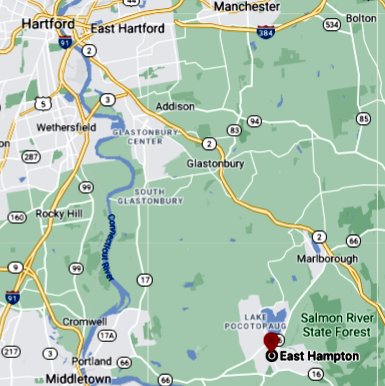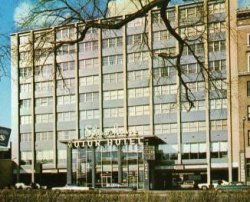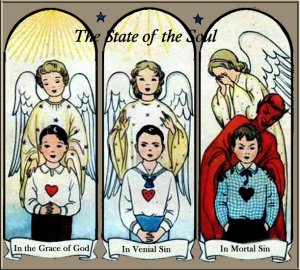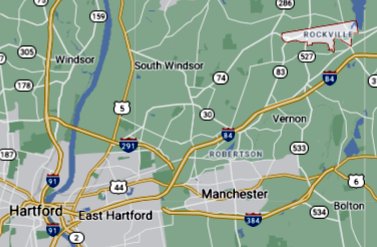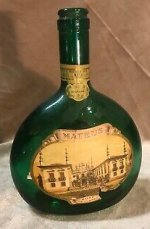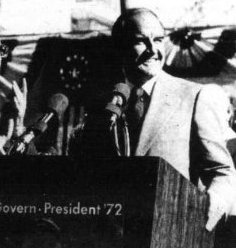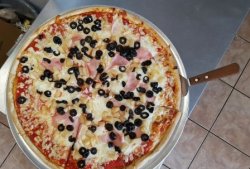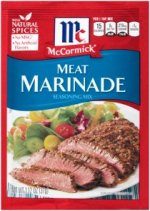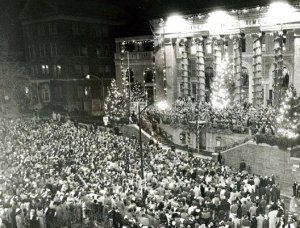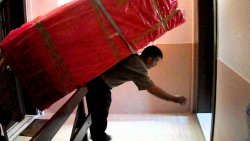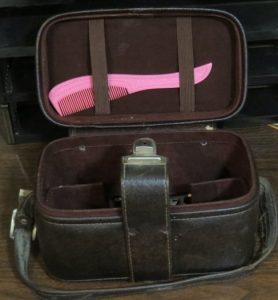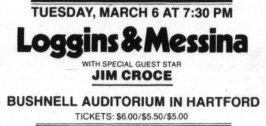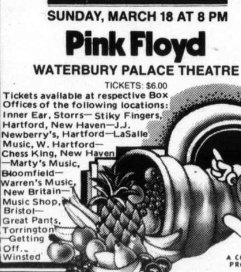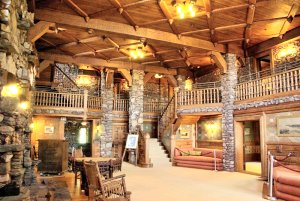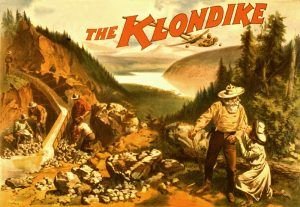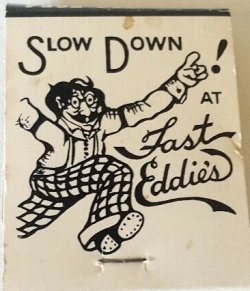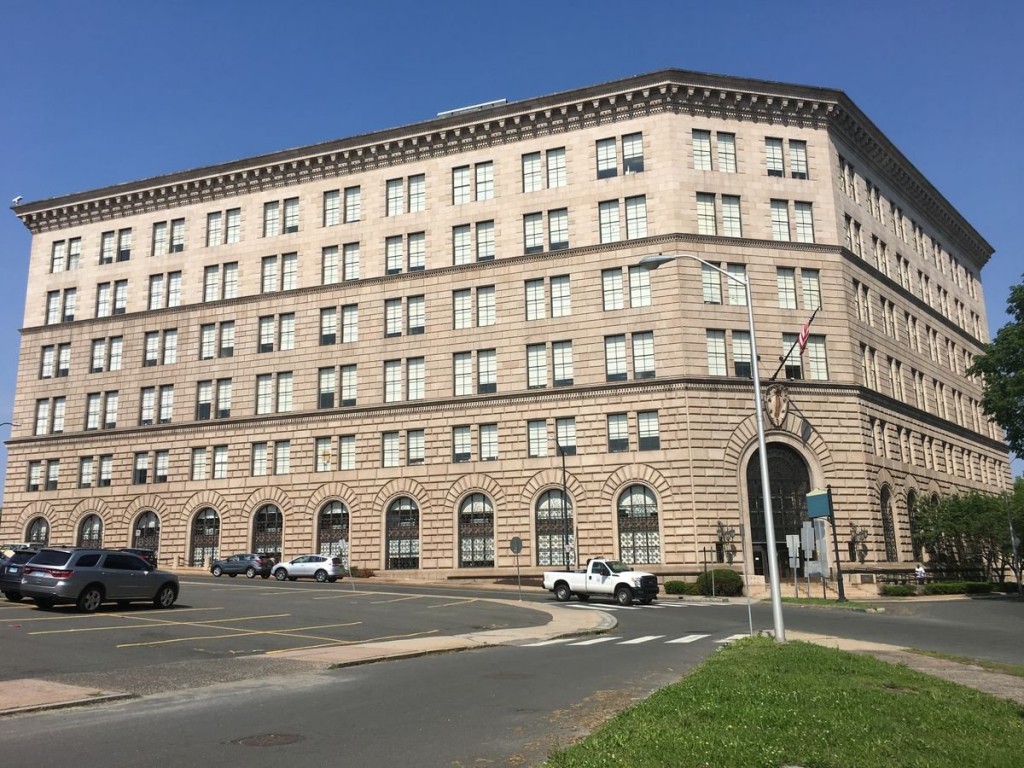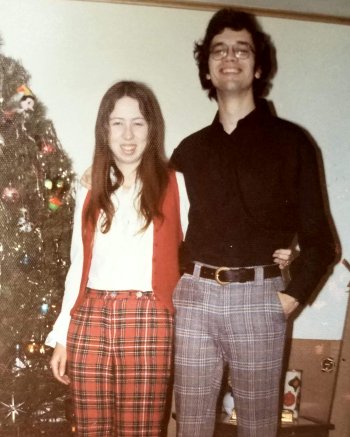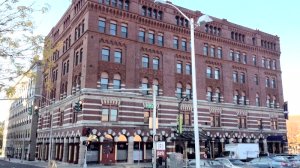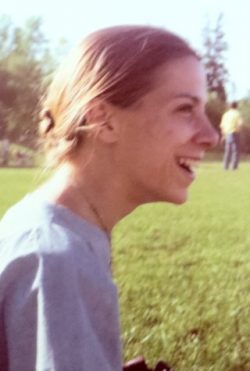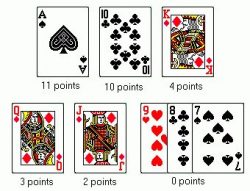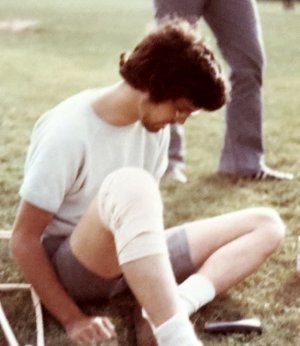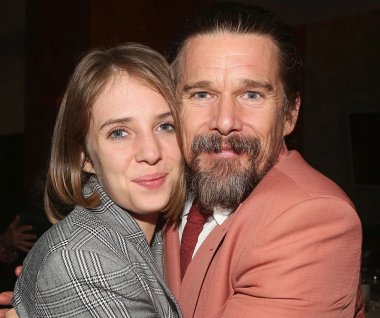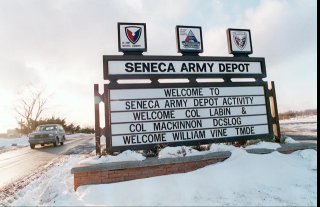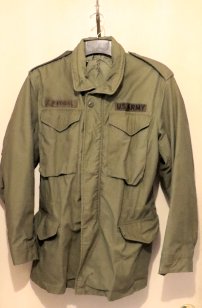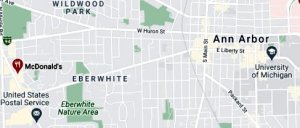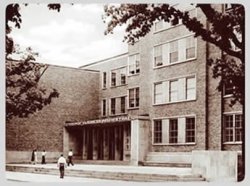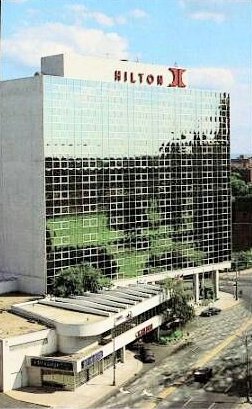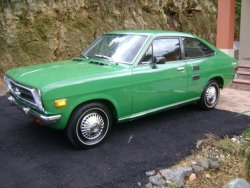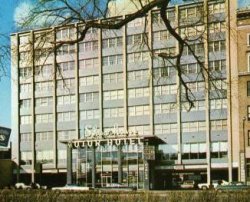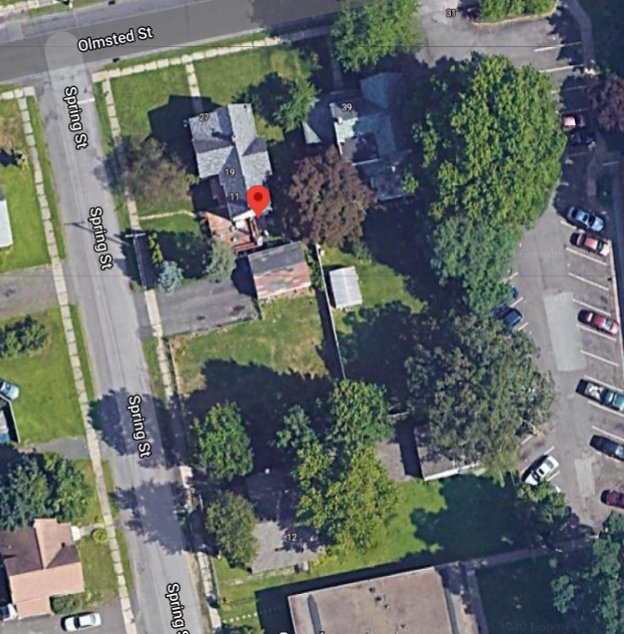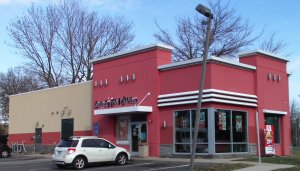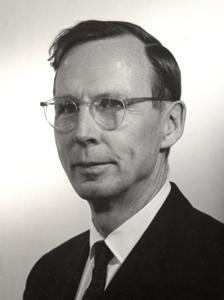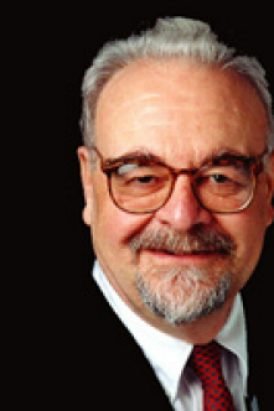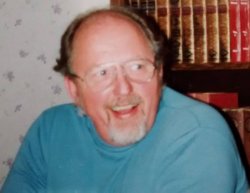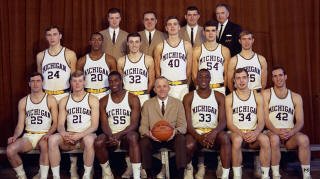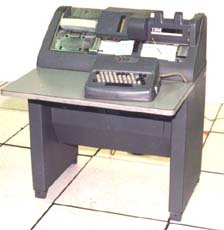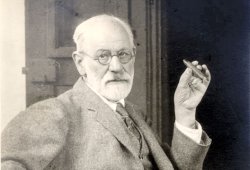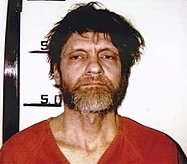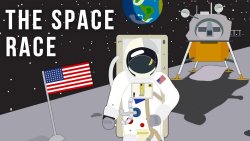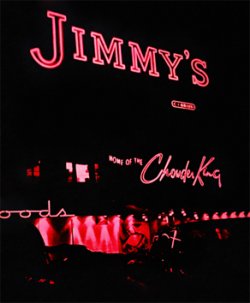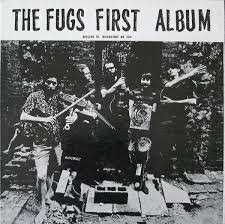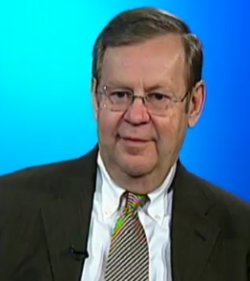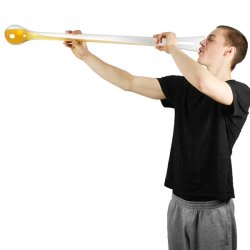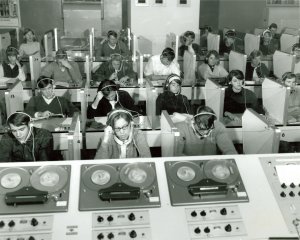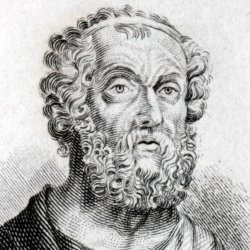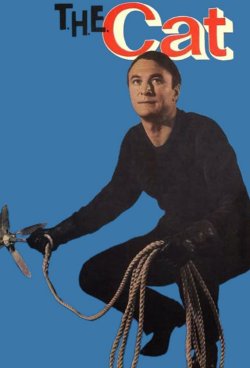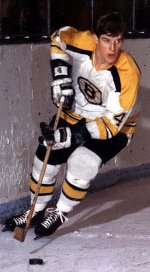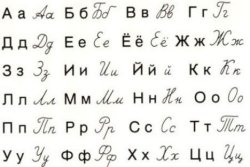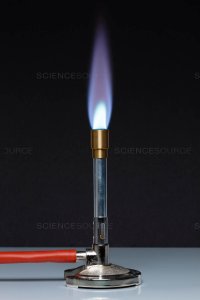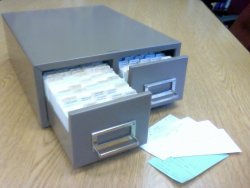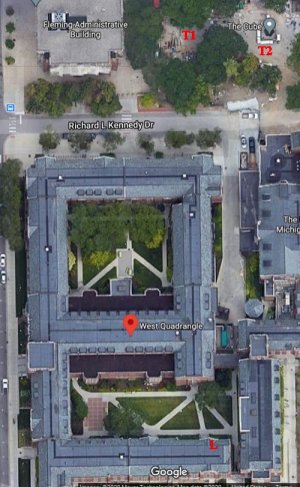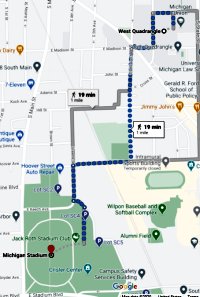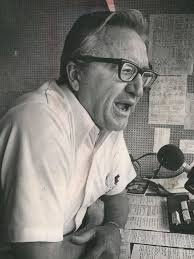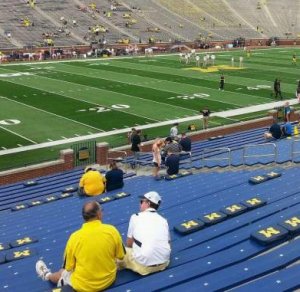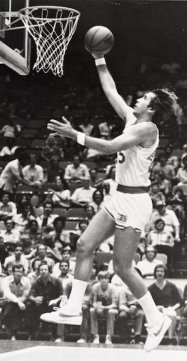Could a relationship between a preppy lad from Kansas and a country lass from Connecticut last? Continue reading
For the few weeks that I worked in the Variable Annuity area of the Life Actuarial Department at the Hartford, my desk was behind Sue Comparetto’s, and we shared a phone. She was the head clerk in Bob Riley’s section. This meant that she was the only person there entrusted with an electronic calculator. Those silent marvels would soon replace the gigantic noisy Fridens, but they still required an AC connection and cost about $1,000.
I am pretty sure that Sue’s first impression of me was negative. Our only noteworthy interaction was when I was called upon to talk with someone on the phone. My desk had no phone; I had to use hers. I never called anyone, and most of the calls that I received were nerve-wracking; I perspired all over the receiver. I wiped it off before I gave it back, but it was still rather gross.
I did not know Sue well, but what I heard about her was somewhat disconcerting. She lived in East Hampton, CT, with Diane DeFreitas and, I think, another young woman. She did not have a car. A “Cuban plumber” sometimes gave her a ride part of the way to the Hartford. She hitchhiked the rest of the way. She had picked up a black Labrador puppy at a flea market and named him Siddhartha. At some point she must have realized that this situation was not sustainable, and she took the dog to the pound. Someone else may have catalyzed the decision.
I remember that one day both she and Diane decided to dress slutty for work. Sue did not like dress codes. She told me that she had been suspended from high school for vigorously protesting the dress code. Her parents were not amused by this behavior.
Oh, yeah. One other thing—Sue smoked. My dad smoked, but hardly anyone else with whom I had ever spent much time did. John Sigler also spoke, but he hardly ever lit up in my presence.
After I was assigned to the Individual Pensions area I only saw Sue in passing and at the Friday evening gatherings at the Shoreham Hotel’s bar, situated very conveniently between the Aetna and the Hartford. At some point one of the most important events of my life occurred, and yet I have no clear memory of the details. For some reason Tom Herget set me up with Sue for some event. I don’t remember when it was or even what we did. I have a vague recollection of the Aetna Diner (Sue liked their moussaka) on Farmington Avenue, but maybe that was on a different occasion. I am pretty sure that Sue told me on that occasion that I reminded her of her husband, and she was astonished to learn that my middle name was Dennis. She explained that her husband’s name was Dennis, and his middle name was Michael.
I don’t think that I previously knew that she had been married. This explained why she did not look even vaguely Italian. I certainly did not know that she was still legally married. I had to make a snap judgment whether being with her was a mortal sin or a venial sin. It was a tough call, but I was pretty sure that any further contact would move the needle over the line. For twelve years I had attended Catholic schools, and I had never missed going to mass on Sunday. Not once. I probably confessed more impure thoughts than I actually had. You have to confess something.
I somehow quieted my conscience and had a good time that night, and Sue and I started “seeing each other.” By this time she had moved to Rockville and rented a room in the basement of a house owned by a female employee of the Hartford named Jackie. She also had somehow persuaded a bank to finance her purchase of a 1972 Dodge Colt.
During this period Sue was also, at least in theory, studying for Part 1 of the actuarial exams. She was at a huge disadvantage compared with others taking the test in Hartford. Most of them got study time and took classes in the subject. She did not pass.
It must have been on an evening in October that Sue offered to fix a steak supper for John Sigler and me. Jackie must have let Sue use the kitchen; Sue’s apartment barely had room for a bed and a couple of chairs. We all sat around after dinner drinking Mateus, talking, and listening to Leonard Cohen records. Finally John departed. I spent the night with Sue on her small waterbed, a totally new experience for me.
Over the next few months Sue and I went to numerous places together. A bunch of us walked down to Constitution Plaza together to attend a noontime rally for George McGovern. 1972 was the first time that I was allowed to vote in a national election. In 1968 the voting age was twenty-one, and I was only twenty. Sue, who was born in 1951, was barely old enough to vote this time. I really hated Nixon. I suspected (correctly, as it was later revealed) that he had deliberately scuttled the peace talks in Paris about Vietnam. Never mind his secret war in Laos and his part in the overthrow of the democratic government in Chile. I never had to serve in Vietnam, but I blamed Nixon for stealing two years from me when I was in my prime.
Sue and I both voted for McGovern. I even put a McGovern-Shriver1 sticker on Greenie’s bumper. I felt as if I had gotten McGovern one more vote than he would have otherwise received. Of course, it made no difference. Most Americans believed Tricky Dick really had a “secret plan” to end the war, they were afraid of the godless communist menace, and for some reason they did not like McGovern.
Sue and I attended a couple of movies in theaters. I seem to remember that there was a theater in West Hartford that showed older movies. I am pretty sure that we saw Blow-up together and at least one Marx Brothers movie.
We ate at a few restaurants in Rockville. I am certain that we shared a ham and olive pizza a small restaurant on Main St. near Route 83. It must have been part of a chain. It had a number after its name. Sue liked to go to Friendly’s. At the time their menu consisted of overpriced hamburger, overpriced cheeseburgers, overpriced “Friendly Franks”, and ice cream. Sue focused on the ice cream.
I cooked a few meals for us in my apartment. For example, I fixed a sirloin beef roast using McCormick’s Meat Marinade2, a trick that I learned from my mother. Sue was pleasantly surprised at how good it tasted. She said that she had never liked beef roasts. She explained that when her mother cooked them she left them in the oven until they were grey, dried out, flavorless, and chewy. I tried to fry a chicken, but it did not work out too well. I had to put it in the oven before serving because some parts were not done. Microwave ovens existed, but I did not have one. After that we stuck to extra-crispy chicken from the colonel. However, I bought at least three cookbooks, and I developed a few very tasty specialties.
I took Christmas very seriously in 1972. It was only the second holiday season that I had spent away from my family, and this time I was really on my own. The feeling was much different from any previous Christmas. I spent a lot of time shopping for little gifts and writing personalized Christmas cards for my friends. Sue and I attended the Carol Sing at the Hartford Times Building in downtown Hartford. The Times3 published a half-page photo of the huge crowd that was assembled. My off-white cowboy hat and fleece-lined suede coat made it easy to spot us in the photo. We showed the clipping to all of our friends.
My first New Years in Connecticut was also memorable. I decided to roast Cornish game hens for supper, and we invited Tom Corcoran and Patti Lewonczyk to join us. The four of us were also invited by Tom Garabedian and Gail Mertan to a party at Tom’s house in East Hartford. The meal was a big success. I think that Sue cooked some kind of vegetables, maybe her famous carrots Lyonaise. Of course, we also served wine.
We all probably ate too much. No one felt like going to a party. However, it was less than a mile to the Garabedian house. So, we all piled into one of the cars and drove there.
The only two people in the house when we arrived were Tom and Gail. Evidently Tom had persuaded his parents to make themselves scarce. Tom and Gail had laid out a cornucopia of food and beverages—enough for several dozen people. No one else ever came. It was not much of a party, but if we had submitted to the lethargy induced by the supper, it would have been a disaster.
Over the holidays I got to meet some of Sue’s family. Her parents, Art and Effy Slanetz, and siblings all lived in a farm house on North Maple St. in Enfield. Sue was the oldest child; she had two sisters, Karen and Betty. They were nothing alike. She also had a brother Don. I met Effy’s dog, Queenie, and a bevy of Sue’s uncles, aunts, and cousins, all of whom lived within a few miles of the Slanetz’s house4. Many of them seemed to make a living by driving trucks in one way or another. Their favorite sport was NASCAR. I did not contribute much to the banter.
Behind the house was a fairly large field that was actively farmed by the Polek family that lived in the house that was between the Slanetz’s house and a warehouse in which Art stored all kinds of old mechanical junk. Sue told me that that the field was their family’s land at one time. When she was little they raised potatoes.
The winters in the seventies were brutal. Early in 1973 (I think) I was driving Greenie, and Sue was riding shotgun after a snowfall of a couple of inches. We were headed south on I-91 through Hartford. I was driving at a very reasonable speed in the right lane, and, thank God, there were no cars nearby. All of a sudden my car’s rear wheels began moving to the left, but the front wheels did not. The car performed a spin of about 315°, and my left front bumper whipped into the guardrail on the left, which brought us to a halt.. Neither of us was injured. We were both wearing seat belts—I never let anyone ride in my car without a seat belt. It was amazing that my car suffered only a negligibly small bump, and the vehicle was positioned so that I could quickly steer back onto the highway. This scary event made me realize that I had to be very careful with this car in dicey road conditions.
Sue had a very large number of friends. My favorites were Bob and Susan Thompson. Bob worked in a small factory. He complained about the smell of the chemicals there. His job might have had something to do with linoleum. I think that Susan was a teacher. They had a house in Coventry and an extremely amorous dachshund. Once he gained purchase on a pants leg he was difficult to detach. Bob owned a Plymouth that saw its best days in the Eisenhower administration, or maybe earlier. In snowy weather he liked to take it into an empty parking lot and make it spin donuts.
When we had not seen Bob and Susan for a few months, I asked Sue why. She said that she had loaned them some money, and she was pretty sure that they were avoiding her because they could not afford to repay her.
On Valentine’s Day 2013 I bought Sue a present and a card. She had forgotten about it, and therefore she did not reciprocate. I took it a little hard.
Eventually I learned that Sue and time just did not get along. She regularly forgot holidays, birthdays, and appointments. She also could not gauge the passage of time. She might think that events occurred a week ago actually happened two months earlier. If she said that something would take fifteen minutes, it usually took an hour or more. If any food (e.g., beef or lamb) needed to be cooked for a specific amount of time, I had to do it. In retrospect I marvel that she had chosen to grill steaks for John Sigler and me. I cannot remember how they turned out. I was not paying too much attention to the food that night.
Sue was always late. I adopted the habit of carrying a book around with me for the inevitable waiting periods.
I recall that in February of 1973 Sue and I helped one of her many friends move to a new place. The woman who was moving might have been one of Sue’s roommates in East Hampton. I remember that I was one of the people assigned to get an old refrigerator up the staircase. We succeeded, but I could not describe what technique was employed beyond brute force. At one point the woman who was moving asked what day it was. I said that it was Saturday the 24th (or whatever it actually was). She said “No. I mean, what month?”
I decided that Sue’s twenty-second birthday on March 2 should be Sue Comparetto Day. I offered to buy her anything that she wanted. She wanted to shop for a camera. We drove to a camera shop of her choosing, and she selected a thirty-five-millimeter camera with a leather case. I would have inserted a photo of it here if I knew where it was. I guarantee that it is in the house somewhere. Sue would never have thrown it out. I did find the case, which still had one of her combs in it.
We went to two concerts together in March. The first was at the Bushnell Auditorium in Hartford on Tuesday March 6. The headliners were Loggins and Messina, whose only real hit “Your Mama Don’t Dance” was very popular at the time. Sue and I must have attended in hopes of seeing the advertised opening act, Jim Croce. Neither Sue nor I can remember him appearing. Apparently he canceled for some reason. Almost everyone in the audience was at least five years younger than we were, and they enjoyed the L&M performance a lot more than we did. By the end of the show we really felt like old fogeys.
The other concert was at the Palace Theater in Waterbury. Pink Floyd had just released “Dark Side of the Moon”, which is widely considered their masterpiece. There were huge speakers blasting out sound from all four corners of the theater, and there was an abundance of strobe lights and other dramatic flashes. The crowd went crazy, but I was definitely ready to leave after fifteen minutes. You can listen to the whole two-hour concert here.
On April 1, 1973, Sue’s husband Dennis committed suicide. Sue went to the funeral. He had attempted suicide at least once in the fall. Sue had visited him in the hospital on that occasion.
When the weather got warmer Sue and I enjoyed a very pleasant trip to Gillette Castle, a bizarre structure that overlooks the Connecticut River. It was built of local fieldstone by the actor William Gillette. He is most famous for his portrayal of Sherlock Holmes more than 1,300 times on the stage, once in a silent film feature, and twice on radio programs. The estate is now a state park. I found it to be a very interesting place. The grounds were very relaxing. There was even a small train that had been used by Gillette himself. We had a very nice picnic.
We also spent some time in the interior5 of the castle. The extremely ornate inside was at least as fabulous as the grounds and the view. This was one of my favorite days in my first trip to Connecticut.
At some point Sue decided to quit her job at the Hartford. She found a new line of work at Travelers Equity Sales. She had to take a test to become a registered rep. She passed on the first try and worked there through the spring and most of the summer. While she worked at the Travelers she became a close friend of Diane Robinson, who originally came from Passumpsic VT, and Karen Peterson.
Around the same time that she changed jobs Sue moved to an apartment on Jefferson St. (or maybe Washington St.) in Hartford. I don’t remember much about it. My only clear recollection is of the only time in my life that I ever ran out of gas. I was about two blocks from her house and perhaps one hundred feet from a gas station. Even though it was slightly uphill I was able to push Greenie up to the pump all by myself. I was only a little stronger then; Greenie was very light and easy to push.
During her time at T.E.S. Sue and I started to grow apart. She was a whirlwind of activity, and I often felt left out. She had a gazillion friends of both genders, and sometimes I became jealous. She probably started to think of me as too clingy.
When I met Sue, she already had a boa constrictor named Puca, but he was barely six feet long and skinny. She did not feed him much, and when she did, all that he got was a dead mouse heated over a light bulb to fool his heat-detecting senses. One evening we visited her friends Stan and Pat Slatt in Marlborough. They had a ten-foot boa constrictor that Stan fed live rats and a thirteen-foot python that regularly ate a full-grown rabbit. I had no fear of Puca, but these two monsters gave me pause.
In the summer of 1973 Sue moved to an apartment complex on Wales Rd. in Andover. Her apartment was right across the street from the one that Scott and Cindy Otermat lived with their huge dog Cinders. I saw her only a few times before her big trip.
Sue, Diane, and Karen decided to quit their jobs and drive to Alaska. I am not sure that their plans were any more specific than that. I don’t know what they used for money. Maybe they knocked over a bunch of banks in those states along the Canadian border, or they might have found a big nugget of gold in the Klondike. They did not take Sue’s car. She left it at her apartment, which she “sublet” to a guy who worked on roofs for a living. I am pretty sure that they were “involved” before she left. He also was supposed to take care of Puca, but the reptile escaped from his cage either just before Sue left or just after.
This was the greatest adventure in Sue’s young life, but I was absolutely miserable. I felt sorry for myself. It was hard for me to face all my friends. I took a lot of long walks.
During the trip the three ladies all hooked up with Air Force guys stationed in Alaska. Diane ended up marrying Phil Graziose. They lived in a trailer park in northern Vermont for a number of years and then bought an old house in St. Johnsbury with a storefront in which Phil ran a locksmithing business.
On the trip Sue became seriously involved with an Air Force guy name Randy, who came from, of all places, my home town of Kansas City. I refused to listen to the stories of her adventures, but I could not help overhearing that there was one incident in which someone nearly drowned.
Meanwhile, back in the lower forty-eight Friday, August 17, 1973, was a memorable day. Since it was my twenty-fifth birthday, I invited everyone to help me celebrate. At least eight or ten of us went to Fast Eddie’s bar on the Berlin Turnpike. I had never been drunk in my life, and I had no intention of overindulging that evening. The problem was that we were drinking beer by the pitcher, and people kept refilling my glass without asking me. I never asked for a second glass. My mother had drilled into us that if there was food on our plate or beverage in our glass, we were expected to consume it. If there was a possibility that we might not want it later, we were not to put it on the plate. Once it was there, however, …
At any rate, this was the only time in my life that I have driven a car when I definitely should not have done so. Fortunately, Greenie pretty well knew the way back to my apartment, and there were no incidents. The next day I awoke with my first hangover and played my epic tennis match with Jim Kreidler. It is described here.
Tom Corcoran and Tom Herget had been living in a large old house at 345 Hartford Avenue in Wethersfield. The third housemate had been a guy named Monty. Herget had furnished the house from items he picked up at second-hand stores on Park St. in Hartford. In August of 1973 Monty had to leave for some reason. They asked me if I wanted to take Monty’s place. It was a no-brainer. The rent was less, and life would surely be more interesting. In addition, I would be rid of a lot of scenery that connected with memories that now seemed bitter to me.
In August of 1973 I bought and read the popular book I’m OK—You’re OK by Thomas Anthony Harris. It described the research on hemispheric separation in the brain that showed that under certain circumstances people clearly have two (or more) relatively independent decision-making mechanisms. We identify with only one of them, the one that can read and talk. When something happens that this portion of the brain did not order, we are likely to say “I don’t know why I did that.” Understanding that the first “I” and the second “I” in that sentence are largely independent agents really helped me to understand people, including myself, better.
During this period I was being paid to study for Part 5 of the actuarial exams. The subject matter was indescribably boring. Can you think of anything more tedious than studying the history of mortality tables? I liked my work, and I had made some great friends in Connecticut, but there was one aspect that I really missed—debate tournaments and the thrill of competing at the highest level. I began to think about going back to college to coach debate. I wrote to Bill Colburn at the University of Michigan to inquire if that was feasible. He replied that I needed to apply to graduate school. He thought that he could arrange for financial assistance for me. I also did a little bit of research on my veterans’ benefits.
I heard that Sue had come back from Alaska, but I did not see her for quite some time. Finally she came over to the “345 Club” one evening. For some reason I was up in my bedroom. I think that the two Toms tried to talk her out of it, but she came up to see me. I don’t exactly remember what happened, but she ended up staying the night with me.
I learned that Sue had landed a new job at the “Little Aetna” section of Connecticut General. When she returned from Alaska she discovered that the roofer had not been paying the rent. My recollection is that her car was also repossessed. She eventually found Puca—alive—between two towels in a linen closet.
So, Sue and I began what I think of as the “toll bridge” section of our relationship. In those days the Charter Oak Bridge and the Bissell Bridge had toll booths in both directions. The fastest way from the 345 Club to Sue’s apartment was via the Charter Oak Bridge and I-846. One could save a little money by buying a book of prepaid tickets, and that is what both Sue and I did.
The worst ice storm that I have ever seen hit central Connecticut on December 16-17. More details are provided here. The storm affected Wethersfield much worse than it did Andover. So, like my housemates, I abandoned the 345 Club, brought some clothes to Sue’s apartment, and stayed there for a while.
One morning during that winter—I don’t remember if it was before or after Christmas—I was driving from Andover to Hartford. Greenie was headed westbound on the portion of I-84 between Manchester and Bolton. It was early in the morning; the sun had just come up. The road conditions did not seem too bad, and I was going a moderate speed in the right lane. This time my rear wheels decided to go to the right. My car did a 180° spin before coming to a stop in the breakdown lane on the right side of the highway. I waited for traffic to clear and then, taking advantage of Greenie’s extremely small turning radius, executed a tight U-turn. I then continued on my journey. My mantra was the same as that of every male in his twenties: “No harm; no foul.”
I had decided to fly to Kansas City at Christmas to visit my family. Sue was somewhat shocked when I asked her whether she wanted to come with me, but she said yes7. We were only there for a few days, but she got to meet a lot of my family, including Fr. Joe and my grandfather, John Cernech, who by then had become very nearly deaf. She must have slept on the roller bed in Jamie’s room. My recollection is that Jamie had a date on most of the evenings while we were staying there.
Another event that I remember clearly during the subsequent few months was the night that Sue and I and a group of friends grabbed a table at Mad Murphy’s, a bar near the train station in Hartford. We came there to listen to Sue’s neighbor, Carl Shillo, and his band. We stayed until the closing time, and we had a great time. The highlight was when they played “Ob-la-di Ob-la-da” just before closing. Everyone marched around in a long conga line and sang along.
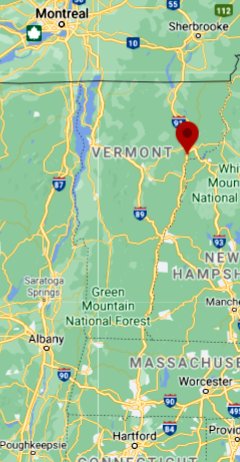
By April or May I had arranged to coach debate at U-M. I asked Sue if she would come with me. She, who was in those days always ready for an adventure, agreed.
Sue and I drove up to Passumpsic to see Diane and her many siblings at least once. I don’t remember when. Tom Herget came with us. I don’t think that Phil had arrived yet. The Robinsons held a barn dance, which I cannot say that I enjoyed much; dancing is definitely not my thing. My favorite memory of this trip was when Diane’s father claimed that he had always wondered why he and his wife had so many more offspring than the other couples until someone explained to him what caused it.
I am pretty sure that Sue made other trips without me. She considered the three-hour drive an easy one, and she was enthralled by the simple lifestyle of Diane’s family.
In 1972 the Hartford recruited three single guys named Tom. The next year two married actuarial students named Jim were hired—Jim Cochran and Jim Hawke. Their wives were Ann and Lesley respectively. The Cochrans were from Wisconsin. The Hawkes were from Texas, although Jim had a bachelor’s degree in math from UConn. I don’t know how they ended up in the Land of Steady Habits.
I remember at least one evening spent at each of their houses, although I cannot say when either event happened. The Hawkes lived in a house in Manchester and a son named Ethan8. Sue and I had supper with the Hawkes and spent most of the evening enjoying Jim’s renditions of rags by Scott Joplin.
A short time after that Jim and Ethan joined Sue and me on an excursion to her property on “Bunyan Mountain”9 in Monson, MA. We parked well below Sue’s property and climbed up. I think that we had some sandwiches and toasted marshmallows.
Sue took photos of this occasion. If she can locate any of them, I will post something here.
Jim and Ann Cochran lived in a house in Glastonbury. They invited us over to play the state card game of Wisconsin, Sheepshead. Neither Sue nor I had ever heard of it. I don’t think that anyone outside of the state of Wisconsin has ever played it more than once. Jim and Ann patiently explained all of the rules to us. Then on the first hand something—I don’t remember what—occurred. As a result both Jim and Ann triumphantly yelled out “It’s a leaster!” They then introduced a whole new set of rules as to how this particular hand would be played.
A brief glance at the Wikipedia page for this game lists some of the “variants” to the rules and hints at many others. Even though tournaments of games are allegedly held in Wisconsin, I suspect that the real purpose of this game is to lure unsuspecting non-cheeseheads into playing the game under a small subset of the rules. The Wisconsinites can then introduce new rules often enough to make the foreigners so confused and frustrated that they leave. Then the Wisconsonites can enjoy their fondue in peace.
Sue’s family played a trick-taking game called Setback or Auction Pitch, which has the benefit of far fewer rules. I played a few times, but there did not seem to be much to it. When someone in Sue’s family asked if anyone wanted to play cards, they meant Setback.
In June of 1974 I broke the patella (kneecap) on my right leg playing pickup basketball. The event itself is described here. I had to miss a few days of work, and I was unable to drive at least until the cast was removed. I decided to move in with Sue in Andover. This also seemed like the best time to tell my parents about that she would be taking care of me in her apartment. They were not thrilled by the idea, but at least they did not commandeer a plane and come to rescue me from her clutches. They weren’t too surprised when I told them that she was going to accompany me to Ann Arbor in a few months.
The rest of the summer was rather blissful for me. I could not play softball or golf, but I attended all of the Mean Reserves games and all the other get-togethers. I cannot remember any unpleasant occasions.
1. Senator Tom Eagleton was nominated for Vice President at the 1972 Democratic Convention. Shortly thereafter he resigned from the ticket when it was discovered that he received psychiatric treatment for chronic depression. The Republican Veep candidate, Spiro Agnew, was a crook, but his crimes did not come to light until after the election.
2. Sue and I returned to the castle in the summer of 2020, but because of the pandemic the interior was not open. We had another nice picnic, and I took some spectacular snapshots of the river beneath the castle.
3. For some reason McCormick’s discontinued this wonderful product in 2019 or 2020. Someone has started a “Bring Back McCormick’s Meat Marinade” Facebook page.
4. The Hartford Times was a moderately liberal paper owned by Gannett and published in the afternoon. In 1972, however, it endorsed Nixon. I wrote a letter to the editor in protest. They published one or two of the hundreds that they received about the endorsement, but not mine. The paper was sold in 1973. In 1976 it accepted the fate of most PM papers and ceased publication.
5. I did not realize at the time that I had only met the Lockes, Effy’s side of the family. The Slanetzes were not homebodies at all. They were widely dispersed. Only one Locke had moved away, Sue’s Uncle Bob, whose family lived in western Michigan.
6. Prior to 1984 the interstate highway that runs from Hartford to the Mass Pike just north of Sturbridge was called I-84 from Hartford to Manchester and I-86 east of Manchester. The never completed road that led from Manchester toward Providence was called I-84. Since 1984 the former highway has been called I-84, and the latter I-384.
7. Sue helped with the production of her high school’s musical Oklahoma. She strongly identified with the character of Ado Annie, the “girl who can’t say no”. I hereby affirm that I have hardly ever heard her turn down an invitation to do something, although she will sometimes cancel later when she realizes that it would be impossible for her to be in two places at once. This may be the biggest difference between Sue and me. I have almost never committed to anything unless I was certain that I was willing and able to do it.
8. The youngster grew up to be Ethan Hawke, the famous actor.
9. Evidently this “mountain” is actually part of Chicopee Mountain. Sue obtained this property as part of an agreement with her father-in-law, Chick Comparetto. There is a nice view of the valley from one spot that is either on or near her land.


